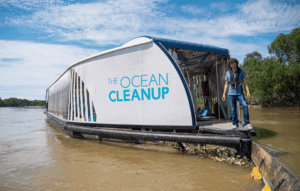In September 1950, an operation known as Operation Sea Spray unfolded off the coast of San Francisco. What seemed like an ordinary military exercise was, in fact, one of the most chilling experiments in American history. The U.S. Navy, under the guise of research, sprayed a bacterial agent, Serratia marcescens, over the city – exposing unsuspecting residents to a bioweapon. This event wasn’t an isolated incident but part of a broader series of bioweapon tests conducted during the Cold War. Decades later, this dark chapter of history forces us to reckon with the ethical and environmental consequences of such actions.
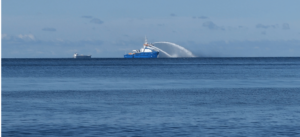
The Unfolding of Operation Sea Spray
Beginning on September 26, 1950, the U.S. Navy minesweeper USS George Eastman sprayed Serratia marcescens into the air over six days, releasing the bacteria two miles off the northern California coast. The goal of this experiment was to determine how vulnerable an urban center like San Francisco might be to a biological attack. The military considered Serratia marcescens a harmless organism – a critical miscalculation that would have devastating consequences.

In the following days, scientists collected samples from 43 locations to monitor the bacteria’s spread. What they found was alarming: Serratia marcescens had infiltrated not just San Francisco but also its surrounding suburbs. Residents unwittingly inhaled millions of bacterial spores, demonstrating the city’s susceptibility to a bioweapon attack.
From the military’s perspective, the experiment was a success. They had proven that urban centers were highly vulnerable to airborne biological agents. However, the consequences of their actions proved far more insidious than anticipated.
Health Consequences for the People of San Francisco
The military’s assumption that Serratia marcescens was harmless soon proved to be tragically wrong. Just one week after the experiment, 11 residents were hospitalized at Stanford University Hospital with severe urinary tract infections – a rare occurrence linked to the bacteria. Tests revealed the pathogen in their urine, its signature red pigment unmistakable. This marked the first recorded outbreak of Serratia marcescens infections in humans.
One patient, Edward Nevin, who had recently undergone prostate surgery, developed a severe infection and tragically died. His case highlighted the experiment’s fatal consequences and raised questions about the military’s reckless disregard for human life. Some researchers have even suggested that the release of Serratia marcescens permanently altered the microbial ecology of the region, leaving an invisible but lasting scar on San Francisco.

Ethical Violations and Public Outrage
Perhaps the most egregious aspect of Operation Sea Spray was the complete lack of consent from the public. Thousands of San Franciscans were unknowingly turned into test subjects in a military experiment, a violation that profoundly impacted public trust in institutions. The secrecy surrounding the experiment eroded confidence in government transparency, and the eventual revelation in 1976 sparked outrage that reverberated for years. This loss of trust not only shaped public perception at the time but continues to serve as a cautionary tale about the risks of unchecked governmental authority. This blatant disregard for individual rights stands as a stark reminder of the dangers of government power.
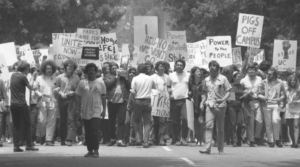
The truth about Operation Sea Spray didn’t emerge until 1976, more than two decades after the experiment. Public outrage was swift, but by then, the damage had been done. No one involved in the operation faced legal repercussions, and the government offered no restitution to the victims or their families.
The experiment also set a troubling precedent. Throughout the 1950s and 1960s, the U.S. military conducted similar tests in other cities, including St. Louis, Minneapolis, and New York. The lack of transparency surrounding these operations has eroded public trust in government institutions, a legacy that persists to this day.
Environmental and Long-Term Impacts
The environmental consequences of Operation Sea Spray remain largely unexamined but potentially significant. By releasing millions of bacterial spores into the air, the military introduced a foreign organism into a complex urban ecosystem. Some scientists have suggested that this may have permanently altered the microbial balance in the region, though comprehensive studies have not been conducted.
Moreover, the experiment underscores the broader issue of environmental contamination during bioweapon testing. While the immediate health effects on humans were documented, the long-term ecological impacts – on soil, water, and other organisms – remain a mystery. Such negligence reflects a dangerous short-sightedness that characterized much of Cold War-era military research.
A Broader Pattern of Bioweapon Testing
Operation Sea Spray was not an isolated event. It was part of a larger program of bioweapon experiments conducted by the U.S. military during the Cold War. These experiments aimed to understand how biological agents could be deployed in warfare and how urban populations might respond to such attacks.
In one infamous example, the military sprayed zinc cadmium sulfide – a potentially carcinogenic compound – over St. Louis in the 1950s and 1960s. Similarly, in New York, subway riders were unknowingly exposed to bacteria in an experiment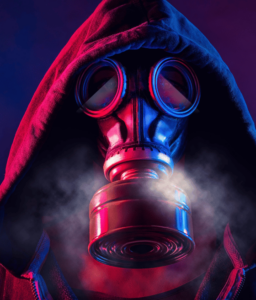 designed to test the dispersal of airborne pathogens in confined spaces. These operations, often targeting densely populated areas, reveal a disturbing willingness to prioritize military objectives over public safety.
designed to test the dispersal of airborne pathogens in confined spaces. These operations, often targeting densely populated areas, reveal a disturbing willingness to prioritize military objectives over public safety.
The program came to an end in 1969 when President Richard Nixon formally banned biological weapons research. This decision marked a turning point in U.S. policy, but it did little to address the harm caused by previous experiments.
Lessons from Operation Sea Spray
Operation Sea Spray offers crucial lessons for both public health and ethics. First and foremost, it highlights the importance of informed consent in any scientific or military research involving human subjects. The violation of this principle during Operation Sea Spray remains a stain on America’s history.
The experiment also highlights the need for transparency and accountability in government operations. The fact that the details of Operation Sea Spray were concealed for decades illustrates the dangers of secrecy in public affairs. Governments should prioritize the well-being of their citizens over military objectives and strive to ensure that past mistakes are not repeated.
Finally, the environmental consequences of bioweapon testing remind us of the interconnectedness of human and ecological health. The introduction of foreign agents into the environment can have unpredictable and widespread effects, a lesson that resonates in today’s discussions about environmental sustainability and public health.
Final Thoughts
Operation Sea Spray remains one of the most unsettling episodes in American history. It serves as a stark reminder of the ethical, health, and environmental costs of unchecked military experimentation as well as blind faith in our “higher-ups”.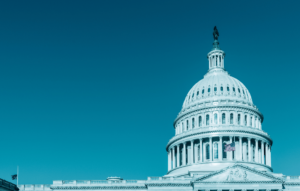 While the Cold War has long since ended, the lessons of Operation Sea Spray remain relevant. As we navigate an increasingly complex world, marked by advancements in technology and the ongoing threat of biological warfare, we must remember the past to ensure a more ethical and sustainable future.
While the Cold War has long since ended, the lessons of Operation Sea Spray remain relevant. As we navigate an increasingly complex world, marked by advancements in technology and the ongoing threat of biological warfare, we must remember the past to ensure a more ethical and sustainable future.
The victims of Operation Sea Spray may never receive the justice they deserve, but their stories serve as a powerful testament to the need for vigilance in protecting human rights and the environment. This is a chapter of history that must never be forgotten.







